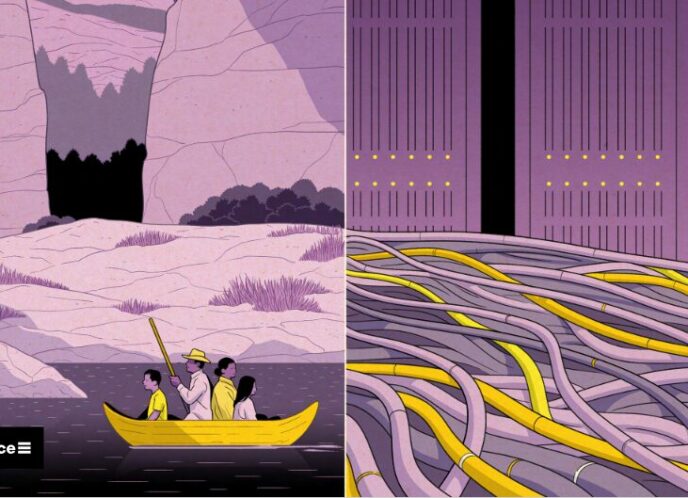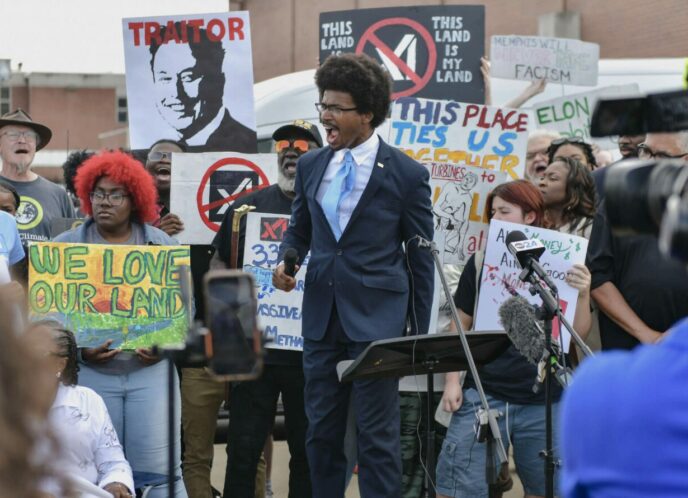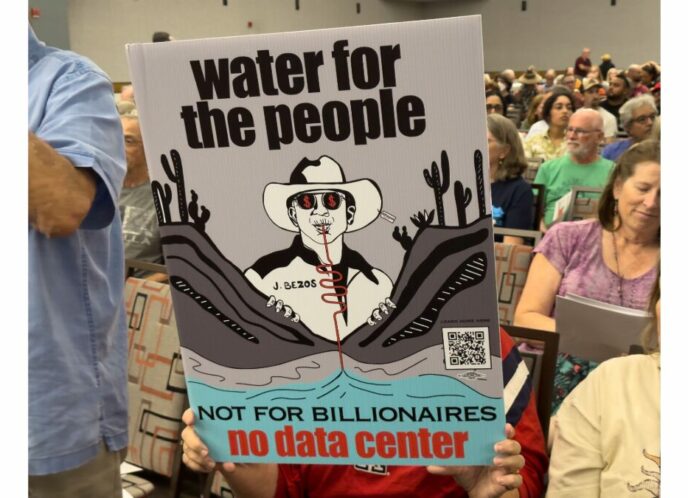Cross-posted from Organizing Upgrade.
“It is part of our task as revolutionary people, people who want deep-rooted, radical change, to be as whole as it is possible for us to be.” – Aurora Levins-Morales
What if our movements made up one body – a living, breathing, loving thing – a healthy body that had the means to act and to communicate as a powerful, present and self-actualized whole?
And what if that body was made up of thousands of diverse parts distinct in their origins and functions, each with unique roles, but all fueled by connective systems that brought lifeblood, health, energy and spirit to the whole?
In this imagined community – this whole movement body – organizing would be the heart and limbs that drive our body forward to a better world. And communications would be the lifeblood that enables us to dance, fight, witness and sing along the way.
I am becoming more and more convinced that to build real power for our communities, we first need to strengthen this body – our movements – from the inside out. This might sound cliché, or even like we got this. But I believe it requires a significant internal culture shift in our movements.
Part of this culture shift involves treating communications totally differently. We are getting better at carrying out sharp and creative strategic communications campaigns to strengthen our fights for racial and economic justice. This is essential. But if we want to build real power for our communities and become contenders in the battle of ideas, communications has to become as core to our justice work as lifeblood is to our bodies.
We need to weave a culture and a web of transformative communications that comes before, during, after, above, below and around our active campaigns. This culture and web would begin with how we speak and listen with each other, permeate how we organize our communities, radiate to the way we build alliances, and hone how we do battle with opponents and targets. In the tradition of Eastern martial arts and Sun Tzu’s Art of War, this work would not be a “soft side” of movement-building but a fundamental and disciplined practice for both survival and transformative change.
Communications as a Healing Practice
Attend me, hold me in your muscular flowering arms, protect me from throwing any part of myself away.
– Audre Lorde
Mass media treats us like criminals. Schools treat us like foot soldiers. Churches treat us like pawns of a higher power. Capitalism treats us like exploitable competitors. Racism and sexism treat us like subordinates. Imperialism treats us like subjects to be pacified, assimilated, or eliminated.
No wonder it’s so damn hard to be whole.
But we have to try, otherwise we are fighting our battles half-starved. Transformative communications would begin here, where traditional models of communications have never needed to go. It would begin with acknowledging a truth at the core of all oppressed communities – that we have a very deep need to heal.
Justice communications – the model of racial and economic justice communications spearheaded by Makani Themba-Nixon and Charlotte Ryan, and continued by the Center for Media Justice and organizing institutions like the Miami Workers Center– can and must become a healing practice. My dear friend, great healer and social justice warrior Spenta Kandawalla, has taught me much about the intersection of somatics and social justice through her work with Staci Haines at Generative Somatics. Generative Somatics bases their work in the understanding that we embody our survival strategies and then act from these deep habits, and that we can transform ourselves and our collective movement body by cultivating practices to increase awareness, depth, and opening for trust, resilience and change. The core purpose of this healing work is to use the transformative power of somatic practice to grow and support a social justice movement that is deeply aligned with its principles, strategies and actions. When we were housemates in San Francisco, Spenta and I would spend hours talking over the kitchen counter about the connections between somatics, healing trauma, and authentic communication. These conversations have convinced me of the need to deeply explore the integration of somatics praxis with strategic communications praxis in our movements.
This would be a step towards further developing a communications approach that is even more deeply rooted in and relevant to our communities. By contrast, public relations (PR) was a field developed to sell products and manage the public image of corporations; it is a key instrument in developing false consciousness and maintaining the capitalist system and hence a key instrument in our fragmentation. Our communications approaches must be wholly different from these PR approaches. They must undo this false consciousness from the inside out by giving us space to address the impacts of poverty, fragmentation, silencing, and marginalization on ourselves and our communities. They must help us touch into difficult but authentic ways to share our experiences and feelings in the process of healing and becoming whole.
This could begin very simply: by telling each other our personal stories. I’ve seen personal storytelling practices used effectively as a tool for consciousness-raising and member development, and as healing and documentation practices in anti-domestic violence and youth development work. These personal storytelling methods, used by Creative Interventions, Third World Majority, ReThink in New Orleans, and many other organizations, can be expanded and perhaps integrated with strategic storytelling tools like smartMeme’s Battle of the Story framework. This integration could help turn individual stories into powerful counter-narratives that address personal and collective pain, and that locate ourselves both within specific oppressive systems that must be changed, and within specific communities that can make this change happen.
This is just one example of a method we might develop to integrate healing and communications practices into our justice work. This could help strengthen our core leadership and support holistic member development. But to do this deeply and well, we need a different kind of communications role. We need healing communicators – people trained in somatics and social justice, healing justice, and strategic communications – who can appropriately nurture this and related practices within our organizations.
Communications as a Visionary Practice
“Yo he preferido hablar de cosas imposibles porque de lo posible se sabe demasiado”
– Silvio Rodriguez
One big obstacle in our movement-building work is that we lack a common and pro-active political agenda and a clear articulation of alternatives to the current systems in crisis. The related communications problem is that it’s hard for us to see and share how our collective stories end.
The internal communications practices that can help us be our full selves can also be a first step towards identifying the common desires, hopes and ideas that would constitute just resolutions to our stories. To help create these just resolutions, transformative communications would prioritize regular practice in collective reflection, creative political discussion, and research for inventive solutions.
This could look like regular facilitation of exercises that allow people to express desire and bold ideas – not just what we’ve already tried that has worked and that hasn’t worked. These exercises could involve asking questions like: “what do you believe in about our work?” “what is the potential of our organization?” “What is the impossible solution that we want to make possible?” And asking questions about alternative systems like: “What role do we want government to play in our society?” “What role do we want culture to play in our society?” “What are our options for ownership?” “What are our options for decision-making?”
Take for example the successful fight to kick the U.S. Navy out of Vieques. Intensive visioning and solutions development permeated every aspect of the work. According to Robert Rabin of the Comité Pro Rescate y Desarrollo de Vieques (CPRDV), organizers went through regular visioning and solutions discussions that were both “strategic and very comfortable”. This led to consistent visionary framing of the struggle. The campaign became a fight for Vieques, not a fightagainst the navy, even though the navy was the campaign’s primary target. The Comité’s name is a concrete manifestation of this visionary framing, as was a number of their slogans including “Paz para Vieques”, their current tagline “Vieques: Porque la Lucha Continua” and “La Protesta con la Propuesta”, which was developed during the height of civil disobedience actions between 1999 and 2003. This forward-thinking framing created room for many different forces to join the immediate fight for a free Vieques, and the longer-term fight for a sustainable Vieques developed for health, peace and justice.
The CPRDV complemented this visionary framing and messaging with solutions-oriented research that continues to improve the lives of Viequenses today. In the mid-nineties – a decade before the navy was officially kicked off the island – CPRDV worked with several forces to create a sustainable development plan for a Vieques free from U.S. military control and toxic contamination. They worked deeply with economists and planners, as well as with a broad alliance of environmental, health and peace activists, and also conducted participatory communications research using methods like community focus groups. The resulting Guidelines for Sustainable Development on Vieques, published in 2003 and used as the basis for the Master Plan for Sustainable Development of Vieques, now govern development policy in both Vieques and Culebra.
CPRDV’s example shows that seemingly impossible desires can be made possible with dedicated visioning and creative research to develop solutions. This piece of transformative communications practice can become more widespread with additional shifts in existing communications roles; in non-profits, we could turn all-too-common communications and development positions into communications and research positions. This shifts the focus of communications from prioritizing funders and grant-writing to prioritizing our constituencies and our own political capacity-building. These researcher-communicators could be trained in communications research methods like media analysis, focus group convening and public opinion polling, as well as in policy and relevant academic research. They could also be trained in creative applications of this research so they could help translate collective visioning outcomes into frames, messages, narratives, and forward-thinking communications strategies. This piece of the web of transformative communications would help us expand our bases and help bridge the gap between our current realities and our dreams for radical change.
Communications as an Artistic Battle
“Oo wee sha sha coo coo yeah” – Prince
If our internal communications can become more of a ritual and practice, then our external communications has more potential to become an artful battle. Transformative communications would redirect how we channel the unity cultivated through internal communications toward opponents and targets on the battlefield of ideas. Right now, we are serious fire-fighters. But we need to become well-rounded warriors. From the center of our full selves and collective visions, we can do battle to not just put out fires, but to win our creative solutions, to shift the terms of debate, and to shift the dominant cultural terrain. As Ricardo Levins-Morales has said, “we can have good seeds – good leadership strategies and tactics – but if the soil is hostile nothing will grow.”
Cultivating the soil to shift dominant terrain requires fighting our battles in a different way. First off, it requires keeping fighting words on the battlefield. We’ve got to cultivate healing practice and constructive debate to deal with internal conflicts, and strategically choose to direct critique and attacks toward our true opponents and targets. In relation to these opponents and targets, instead of reacting to every perceived threat with justifiable urgency and anger, we could shift to choosing strategic opportunities to fight, and to employing our full range of emotions and the full range of our diverse and bad-ass cultures as our weapons.
The Alto Arizona fight against SB1070 provides a great example of centering artistic communications in political battle. From jump, the fight – led by Tonatierra and the Puente Movement and by organizer/communicators including Carlos Garcia, Opal Tometi, B. Loewe, Marco Loera and others, AltoAZ– put cultural work front and center by creating bold visual art by artists like Ernesto Yenera, Favianna Rodriguez, Melanie Cervantes, and Shepard Fairey. These images went viral through postings and downloads on the internet, and through on the ground distribution at strategically-timed mobilizations across the country. They created a poster contest to invite artists to submit their expressions of resistance to the criminalization of immigrants, and to build a visual artist force for the struggle. They’ve also been successful in getting big name musicians like Zach de la Rocha, Manu Chao and Lady Gaga to speak out against SB1070. Last but not least, AltoAZ was ready with social media responses to moments when their opponents overreached. For example, when Sheriff Joe Arpaio’s officers arrested one of Tonatierra’s leaders as he was getting into his car, AltoAZ tweeted, texted and viral video-ed the story to all ends of our movement networks. The headline that a human rights leader was being held as political prisoner was a cuttingly effective frame. The leader – Sal Reza – was freed the next day and is now suing Sheriff Arpaio for wrongful arrest.
Other examples of battling on our own cultural terms abound, including the role of poets and musicians in the MAG-Net battle to keep a free and open internet, and in the Palestinian Campaign for the Academic and Cultural Boycott of Israel (PACBI). PACBI made a great video to pressure Elton John to cancel a June 17 concert in Israel this year. Though the show went on, to me the video is a good example of using the power of our talent, wit and multi-media skill to drive a critical message home to a strategic target. I also think it’s a great example of breaking a movement taboo of enjoying ourselves in public. We know that the more serious things get, the more we have to find things to make fun of and things to make us laugh. My thing is, social justice fighters are some of the most fun, joyful, hilarious, compassionate, and wonderful people I know. Why hide it?
Instead, let’s share it. Let’s channel all these parts of our full selves to transform our movements from the inside out. Let’s develop healing communications roles and practice, to strengthen our core leaders and conduct holistic membership development; Let’s develop vision and solutions-oriented research communications roles and practice, to expand our bases and win victories that build toward systemic change; and let’s train culture workers to be strategic communicators who can make art and culture not just a tactic in strategic communications, but a core approach to communicating from the guts of our being.
The next ten years will be an intense decade for our people. To help our communities survive and thrive, and to transition from the economic an ecological crises towards just alternatives, we will need to cultivate greater internal unity and resilience. These are just some ideas for how we might do that through a holistic sort of communications practice for our people. By shifting our communications approach from purely external campaign work to a combination of deep internal practice and strategic forward-thinking battle, I think we can build the cultural capacity we need to set a left pole that matters in the battle of ideas. It’s just about recognizing that if we hope to transform power relations, rules, and conditions for the long haul – we have to do some real work developing our internal ability to transform cultural norms – beginning with our own.



